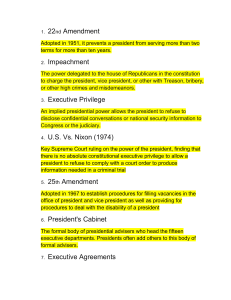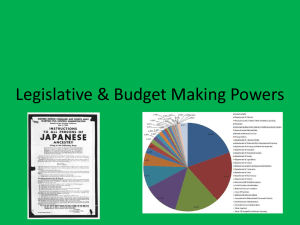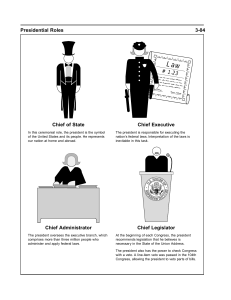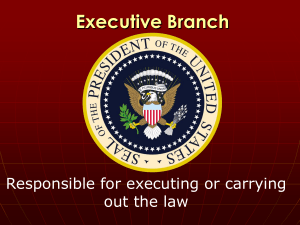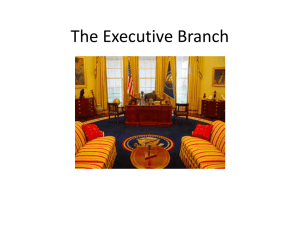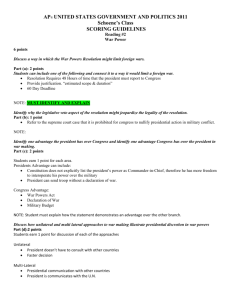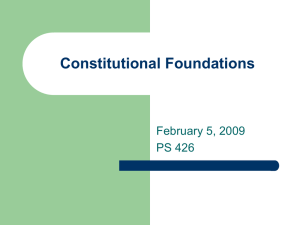Presidential Roles - RHS Encore Academy
advertisement
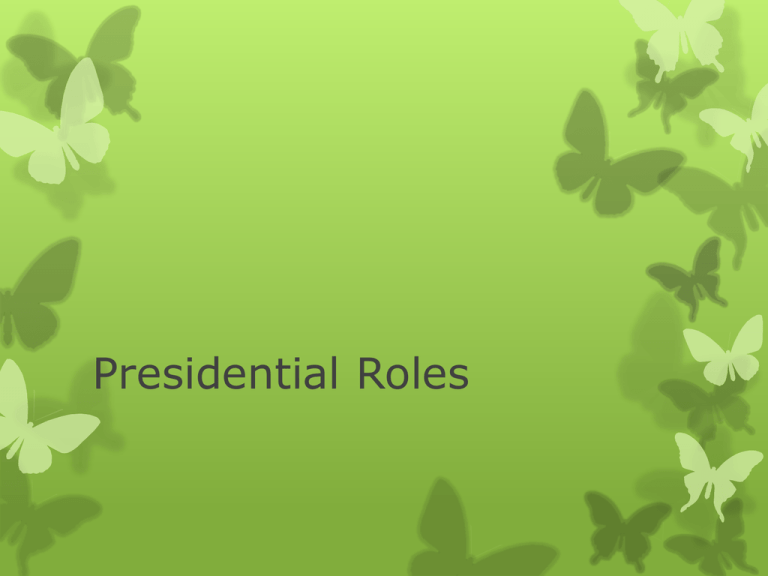
Presidential Roles Watergate 1972 – Several burgulars were caught breaking into the Watergate hotel. DNC Headquarters Told to steal documents and wiretap phones. Assigned this task by President Nixon Nixon attempted to silence the burgulars and stop FBI investigations Use of “hush money” Created skepticism of the office of the U.S. Presidency The Veto • The Veto: power to send a bill back to Congress with reasons for rejecting it. • Pocket Veto: After 10 days, a President lets a bill die without signing it No where in the Constitution does it state the President has legislative powers Two-thirds of both Houses of Congress are needed to override a veto Riding those coattails Presidential Coattails: Occur when voters cast a ballot for members of the President’s party. During midterm elections, members of the President’s party tend to lose seats. Public Support Public support is the most important resource of the President Congressman try to be close or distant from the White House based on public opinion Public opinion does two things: Strengthen resolve of opponents Narrows the benefit of a doubt for Presidents. Press Coverage The Press can be a huge ally for the President However, most coverage is negative. The President can use the Press to: Alter public opinion Put pressure on the Congress Budget crisis It is to the President’s benefit to have a positive relationship with the press. 1.) The President has to make instant decisions regarding war making so that the government was able to respond to a crisis with, in Alexander Hamilton’s words, “energy and dispatch.” But they ensured that this power was subject to control by Congress in order to prevent the President from using force too broadly. a.) Identify a military power of the legislative branch and a military power of the executive branch. b.) Describe how the War Powers Resolution (1973) tried to curtail the President’s power in foreign affairs. c.) Describe one action taken by a President involving foreign affairs since the passage of the War Powers Resolution and describe Congress’s reaction to it.


